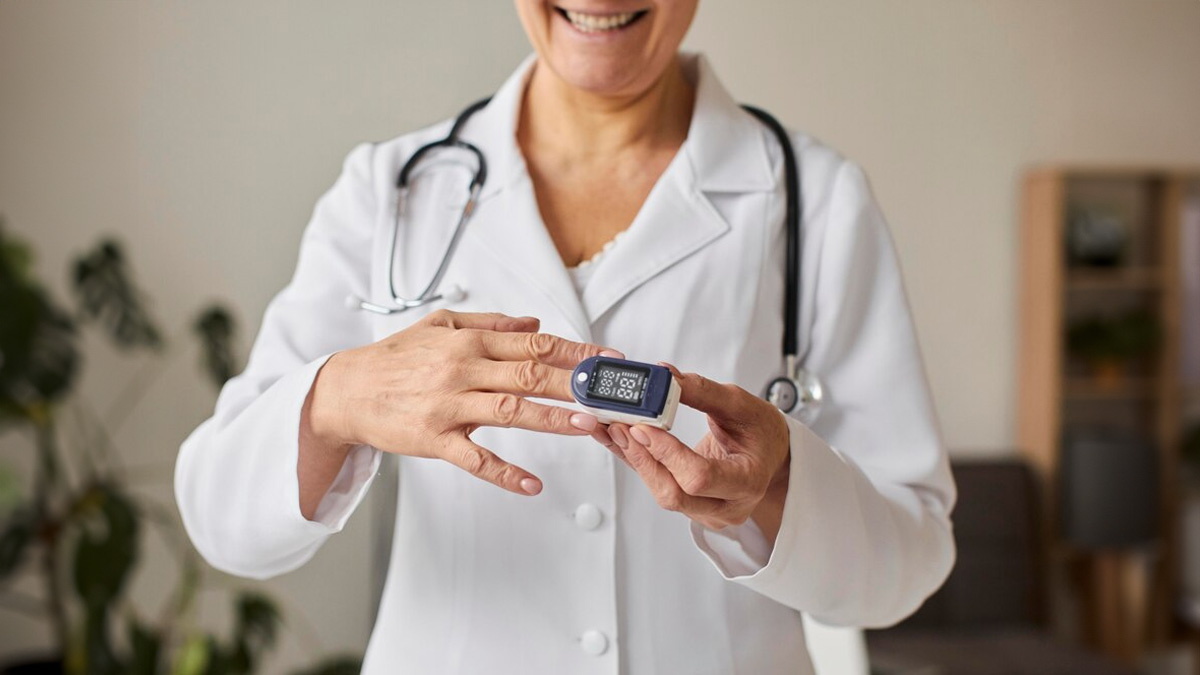
Medical terms like blood oxygen, spO2 levels, and oxygen saturation became more popular during the peak COVID-19 pandemic. The Delta variant had taken a massive toll on the population, leading to distressed breathing and compromised lung functions. During this time, monitoring blood oxygen levels with the help of pulse oximeters became a crucial step in preventing complications.
Table of Content:-
Now, although we’re past the pandemic and are back to leading our normal lives, it is still crucial to know all about healthy blood oxygen and normal spO2 levels in people of all age groups. Dr Shobha Subramanian Itolikar, Consultant-Internal Medicine, Fortis Hospital, Mulund, helps us with important insights.
Also Read: What Does It Mean To Have A Healthy Heart Rate? Expert Answers
What Is Blood Oxygen (SpO2) Level?

Blood oxygen levels refers to the amount of oxygen in your blood, which enters your body through your nose or mouth when you inhale and travels through your lungs into your bloodstream.
It is measured through an Arterial Blood Gas (ABG) test, which involves taking a blood sample directly from an artery, usually from the wrist.
On the other hand, spO2 indicates the percentage saturation of oxygen in one's blood. It is a roughly accurate measure of serum oxygen percentage, says Dr Itolikar, adding, “It can’t be used effectively when there is severe anaemia or in the presence of abnormal haemoglobin like in Sickle Cell Anaemia because the oxygen carrying capacity of blood is hampered.”
Normal SpO2 Range By Age

A simple device called pulse oximeter, which is attached to your fingers or earlobes, is used to measure spO2 levels.
“It works on the principle of photoplethysmography (light transmitted during volume changes in pulse with each heartbeat) pulse oximeter that clips onto your finger to see if your body is getting enough oxygen,” Dr Itolikar explains.
According to the doctor, normal oxygen saturation is ideally 97-100% in adults and children, but in advanced age, meaning in the elderly, it may vary between 93-97% and this can be considered normal for that age.
What Does It Mean By Low Oxygen Saturation?
Low oxygen saturation, often indicated by a low SpO2 reading, means that there is a lower percentage of oxygen in your blood than what is considered normal for your age and health. Also known as hypoxemia, the condition can lead to symptoms like shortness of breath, confusion, bluish skin colour (cyanosis), rapid breathing, and can be a sign of underlying health issues such as lung or heart problems.
Dr Itolikar says, “When oxygen saturation reading is less than 90% in adults and children, it could mean trouble because this means that the oxygenation of tissues is critically low.”

Low oxygen saturation or hypoxemia is seen in a variety of disorders, most commonly in:
- Cardiac disorders like heart failure, heart attacks
- Lung disorders like asthma and pneumonia
- Medications like sedative drug overdose
- High altitude
- Severe anaemia
Also Read: Low SpO2 Level? Know Symptoms of Low Blood Oxygen Levels
How An ABG Test Works To Check Blood Oxygen Levels?
Here’s how an ABG test works to check blood oxygen levels:
- A small sample of blood is taken from an artery, typically in the wrist.
- The blood sample is placed in a machine called a blood gas analyzer.
- The analyzer measures the amount of oxygen (PaO2) in the blood.
- It also assesses other factors like carbon dioxide levels, pH, and bicarbonate to evaluate lung and metabolic function.
- The test provides information about blood oxygen levels and helps diagnose respiratory and metabolic conditions.
Conclusion
Maintaining adequate oxygen levels is essential for the body's proper functioning. Therefore, keeping a check on your blood oxygen levels helps identify any significant deviations from normal levels and aids in the diagnosis and management of respiratory and cardiovascular conditions, which may require medical attention.
Also watch this video
Read Next
Boney Kapoor on Sridevi’s Death: Episodes of Blackout Due to No-Salt Diet, Know Possible Risks
How we keep this article up to date:
We work with experts and keep a close eye on the latest in health and wellness. Whenever there is a new research or helpful information, we update our articles with accurate and useful advice.
Current Version